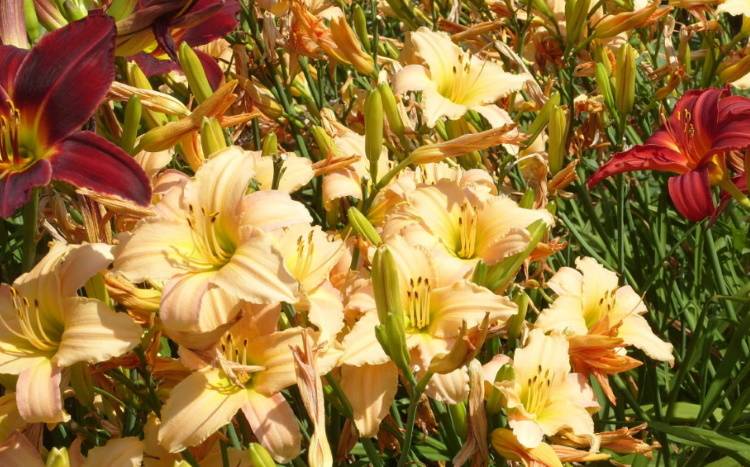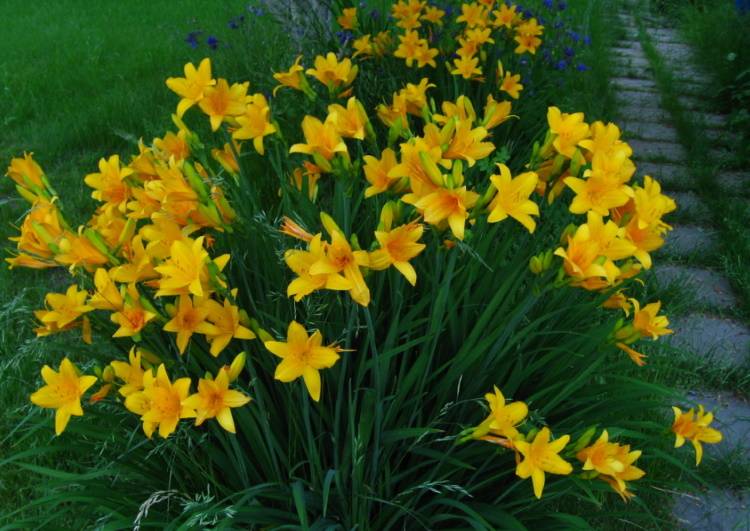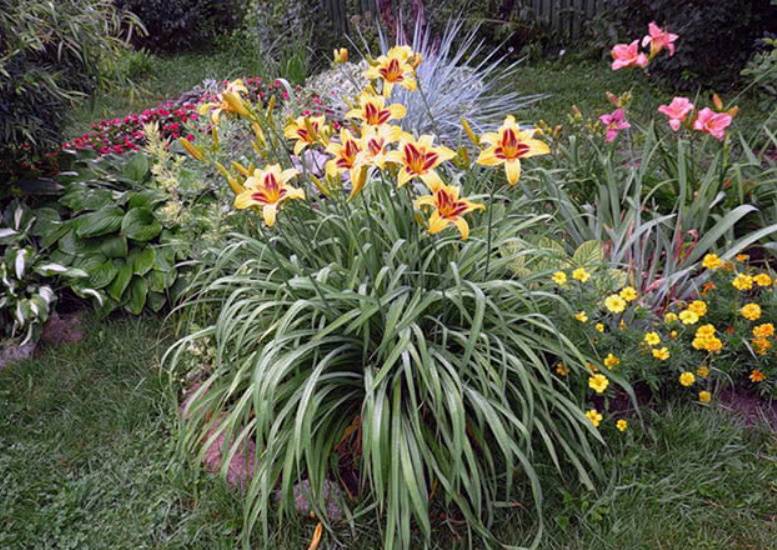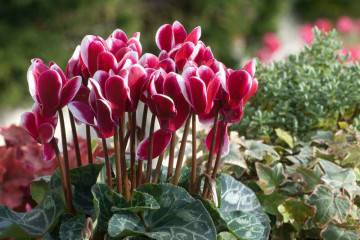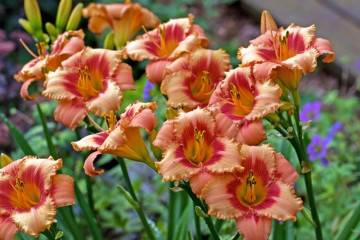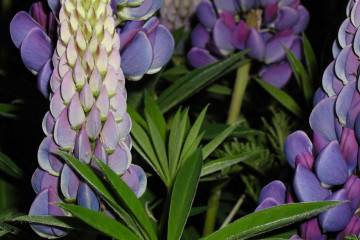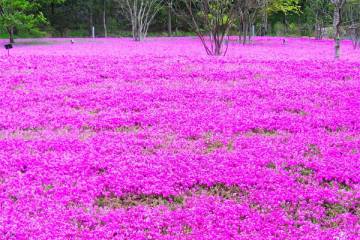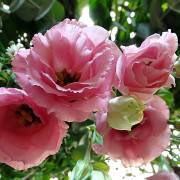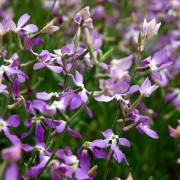When the daylily blooms - how to care
Content:
Daylilies came to Europe from the Far East at the beginning of the 16th century. Prior to that, in Japan, China, in the south of the Russian Far East, these flowers were grown for several thousand years. The Chinese were ready to give a loaf of bread for the Hsuan Ts'ao root - a very high price at that time. Indeed, for them, flowers were not only plants that you can simply admire, but also a talisman, and a medicine, and a delicious delicacy.
Flowering period of daylilies
Modern daylily species are valued for their extraordinary decorative effect. At a time when the daylily is blooming, gardens and flower beds with them turn into objects of admiration and joy.
Historical reference
By the beginning of the 21st century, 30 species of wild daylilies were officially registered in Europe, America, Asia. Plants entered the European part of Russia during the reign of Peter I and began to be grown in the Summer Garden of the northern capital. The flower was named Krasodnev because each of its blossoming buds flaunted for a very short time, only one day, and then faded. The duration of Krasodnev's flowering became the reason for the original English name of the plant - Daylili and the botanical Latin term Hemerocalli.
Latin Hemera means day, Kalos means beauty. The name Hemerocallis was given to plants from the daylily family by the naturalist classifier Carl Linnaeus in 1753. Hemerocallis hybridization was initiated by the Englishman George Weld. In 1892 he was issued by the Royal Botanic Society with a certificate of registration of the first Apricot hybrid obtained from the selection of wild daylily species.
In total, over a long period of breeding work in the world, 83,400 cultivated varieties of Hemerocallis have been registered, and, according to some sources, no more than 35,000 varieties are actually grown, among them are daylilies.
Hemerocallis classification
Florists-decorators, when choosing plants for growing in open ground or in greenhouse conditions, are always interested in the daylily, the flowering time of a particular species.
The classification of plants by flowering time is based on the trait when the daylily blooms, in what month. Hemerocallis are subdivided into the following types:
- Very early plants, blooming from May to June, these include the yellow daylily, the Stella de oro cultivar, the famous daylily, the flowering period of which extends throughout the summer.
- Early, early-middle - begin to bloom in June, bloom for about 3 weeks (varieties Read my lipst, Double Firecracker - are able to bloom a second time in mid-summer).
- Medium - bloom in July (varieties Ebony Jewel, Light Years Away).
- Late - flowering occurs in the second decade of August and early autumn (large-flowered variety Primal Scream, medium-late hybrid species Say Yes, Two Cats Dancing).
Daylily - flowering time, plants are divided into the following groups:
- blooming during the day;
- blooming in the evening and withering in the morning;
- blooming during the day.
When buying seed flowering material, it is necessary to find out when the bush of the plant begins to dissolve the first buds and at what time it ends.
How daylilies grow
Plants of the daylily family are perennials. They can be:
- deciduous - shedding foliage for the winter and vegetating again with the onset of spring;
- evergreen - growing in the tropics or the warm southern climate of Russia or as indoor plants, changing green shoots and foliage as they age and die off;
- dormant semi-evergreen - slowing growth during dormancy.
In industrial conditions, the meristem method is used for the reproduction of Hemerocallis - a new plant is grown from the mother's cells in a nutrient solution. Houses are propagated by seeds, separation and rooting of air sockets, dividing the roots of the bush.
The root system of Hemerocallis is a clump of fibrous filaments, overgrown thickened roots, in which flowers accumulate nutrients, like bulbous plants. Therefore, sometimes daylilies are called bulbous plants, and the thickened parts of the roots are confused with the bulbs of real lilies (Latin Lilium).
How daylilies bloom
Daylily inflorescences consist of petals and sepals, inside which are stamens and pistils. The petals can be with a dense, glossy, velvety, embossed texture. Flowers are simple, flat, unevenly and evenly rounded, in the form of stars, spiders, triangles, expanding tubes, bells.
Terry species have two or more rows of petals, sometimes terry buds resemble peony inflorescences. The shape of the inflorescences of some newly created hybrids is generally impossible to classify. Such flowers are referred to as Hemerocallis of indefinite shape.
The range of colors is very diverse - you can find one-color and multi-colored daylilies of all colors of the rainbow. The different color shades of the petals are often complemented by single and double edging along their edges, around the stamens. The petals can be fully or partially corrugated.
Leaving during flowering
The root system of daylilies allows plants to store nutrients and moisture. Due to this, the various Hemerocallis species tolerate small dry periods and grow on any garden soil except sandstone. Flowers are grown both in groups and as single bushes.
Plants of normal forms do not need special care. For normal flowering, the growing location and air temperature are more important. Daylilies bloom well in those areas where the sun is at least 6-7 hours during the day and very poorly - in full shade. In partial shade, a weak flowering of plants is possible.
To bloom the buds, it is necessary that the air temperature at night does not drop below +18 ° C. In the heat, the flowers will need abundant evening watering at the root.
When caring for plants during flowering, be sure to monitor the decorativeness of the bushes, as often as possible, remove the closed buds. This will speed up the blooming of new inflorescences and prevent plants from moving to the generative stage of development. This is done if the gardener does not have a task to get flower seeds.
Post-flowering care
Bushes of Hemerocallis, growing in one place for more than 3 years, after flowering can be divided for propagation or transplanted as a whole to a new place.
On plants that remain in the same place, dry parts are removed, green leaves and stems are shortened. Pruning is carried out on the eve of the onset of frost. Leaves and stems are shortened to a height of 10-15 cm from the ground surface. Carry out root top dressing of the bushes with potassium-phosphorus fertilizers.
Depending on the Hemerocallis species and climatic conditions, they decide on the pre-winter shelter of plants with mulching materials. There are frost-resistant types of daylilies, which in the open air tolerate frosts at -34 ° C.The root zone and cut bushes of heat-loving species are covered with a 5-10 cm layer of dry leaves, straw, rotted sawdust.
Daylilies are very easy to care for, they bloom luxuriously, their choice is huge. New plant hybrids have unusual shapes and colors of inflorescences. But breeders again and again combine already known species and get such exotic flowers that gardeners can only dream of.
